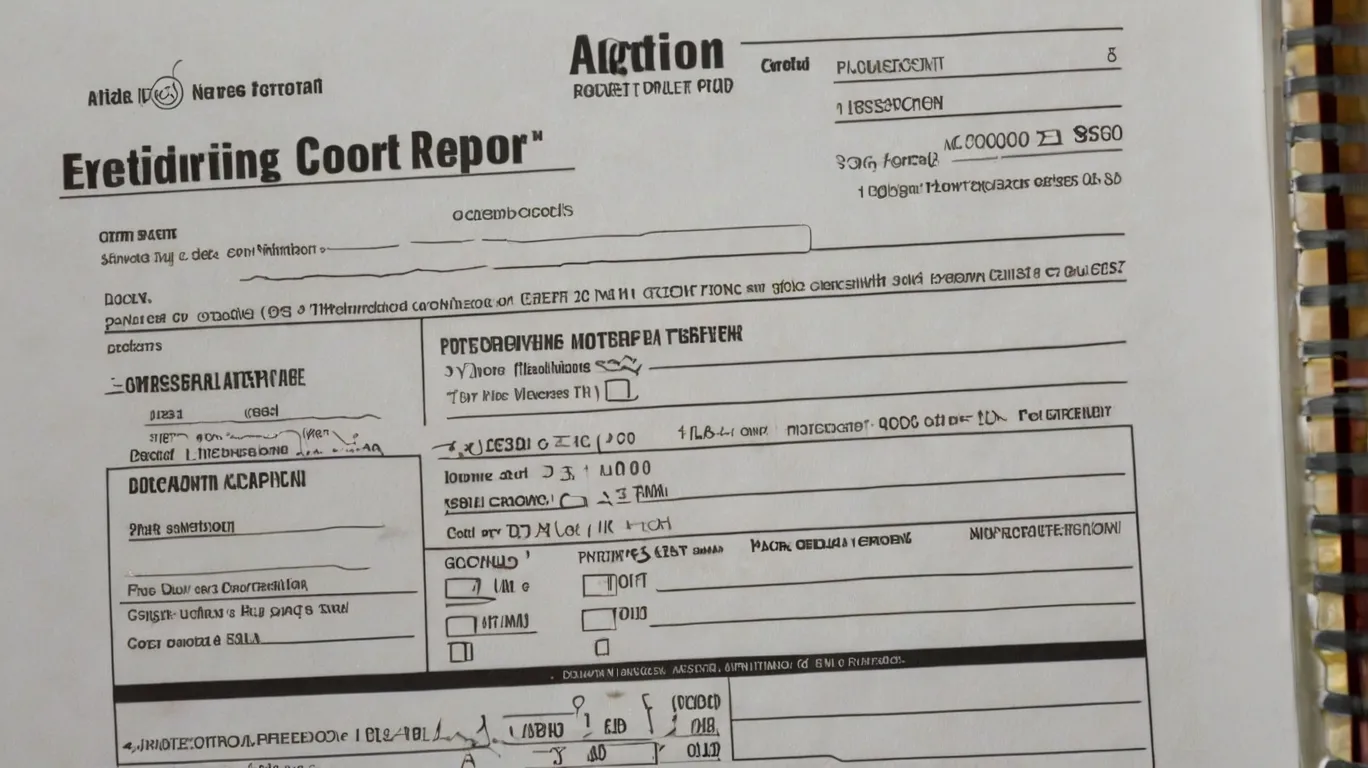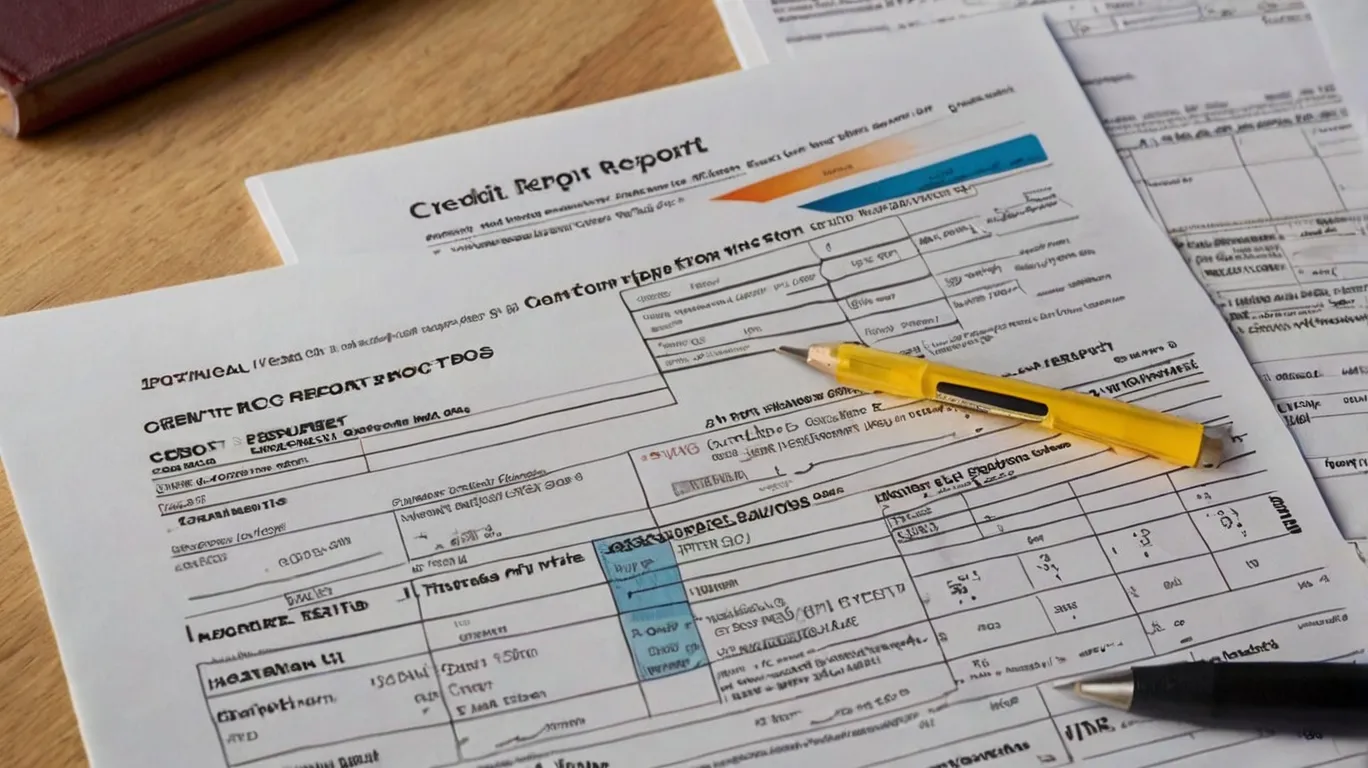Fixing Credit Report Errors
💲Credit report error correction should be a top priority for anyone who has discovered mistakes in their financial history that could potentially derail their dreams of homeownership, favorable loan terms, or even certain job opportunities.
These errors are far more than minor inconveniences—they can have serious, far-reaching implications for your financial health and opportunities. 🌟
Understanding the most common types of credit report errors is essential before you begin the correction process.
These typically include accounts that don’t belong to you, incorrect payment statuses, outdated negative information that should have aged off your report, and duplicate accounts that make your debt appear higher than it actually is. Each type requires a specific approach to resolve effectively. 🌟
💲The dispute process follows a structured timeline that consumers should understand to maintain appropriate expectations. Begin by gathering documentation that proves the error, then submit formal disputes to both the credit bureaus and the information provider (usually a lender or collection agency).
Federal law requires credit bureaus to investigate disputes within 30 days and remove information that cannot be verified as accurate. 🌟
💲Persistent follow-up is often the key to successful error correction when dealing with resistant credit bureaus or information providers. 🌟
Keep detailed records of all communications, including dates, names of representatives, and summaries of conversations. If standard disputes fail to resolve the issue, consider escalating to the Consumer Financial Protection Bureau or consulting with a consumer rights attorney who specializes in Fair Credit Reporting Act violations.
Remember that improving your credit score through error correction can save you thousands of dollars in interest over your lifetime. 🌟
The Anatomy of a Credit Report
💲Before diving into the process of correcting errors, it’s crucial to understand the structure of a credit report. Credit reports are comprehensive documents that capture your credit history, ranging from loans to credit card usage.
They encompass personal identifying information, credit accounts, credit inquiries, and public records such as bankruptcies. Various agencies compile your credit data, and errors can sneak in through several channels.
When creditors report incorrect information, or when there’s data from entities like collection agencies and courts, inaccuracies arise. 🌟
| Element | Description | Potential Errors |
|---|---|---|
| Personal Information | Your name, address, and social security number | Misspelled name or wrong address. |
| Credit Accounts | Details of credit cards and loans | Incorrect loan balance or payment history. |
| Credit Inquiries | List of entities that have pulled your report | Unfamiliar inquiries from unauthorized lenders. |
| Public Records | Bankruptcies, liens, and judgments | Erroneous bankruptcy records. |
Common Sources of Credit Report Errors
💲Inaccuracies in credit reports can stem from various origins, often complicating the process of accuracy verification. Most commonly, errors arise from simple human mistakes, such as data entry errors by a creditor.
Mismatched information due to similar names or social security numbers is also a frequent issue. Additionally, identity theft can result in fraudulent activities appearing on your report, highlighting the need for vigilance and regular monitoring of your credit records. 🌟
“Errors are not in the art but in the artificers.” — Isaac Newton
The Impact of Errors on Your Financial Health

💲Credit report errors can significantly impact your financial well-being. A small discrepancy can lead to higher interest rates or disqualification for potential credit opportunities.
Furthermore, inaccuracies in your record could increase insurance premiums or even prevent job opportunities in companies that conduct credit checks. Given these consequences, understanding the full picture of these errors’ potential damage is paramount for any consumer. 🌟
Detecting Inaccuracies: Regular Monitoring
💲Monitoring your credit reports regularly is your best defense against errors. It’s advisable to review your credit report from the three major credit bureaus: Experian, TransUnion, and Equifax at least once a year. 🌟
Keeping a vigilant eye on any new entries or changes ensures you catch errors early, preventing them from cementing into more serious issues. Each bureau allows you a free report annually, a vital step for maintaining credit accuracy.
1- Obtain reports from all three major bureaus.
2- Review your reports for unauthorized accounts.
3- Verify all personal information on the report.
4- Check for unfamiliar credit inquiries.
The Process of Correcting Errors

💲If you uncover an error, the Fair Credit Reporting Act (FCRA) entitles you to dispute and correct inaccuracies. The process begins with identifying the incorrect entries, gathering supporting documents, and contacting both the credit bureau and the entity providing the erroneous data.
Detailed, written communication is imperative, requesting an investigation into the matter. The bureau then has 30 days to respond, providing a corrected report if the dispute is validated. 🌟
The Role of Credit Bureaus and Consumers
💲While credit bureaus are tasked with ensuring accurate consumer information, the responsibility does not lie solely on their shoulders. Consumers must be proactive, regularly reviewing reports and taking corrective measures when necessary.
This proactive behavior is paramount due to the high volume of information being processed by bureaus, where minor discrepancies can easily slip through unnoticed. 🌟
Professional Assistance: When to Seek Help
💲Navigating the error correction process can be complex, leading some individuals to seek professional assistance. Credit repair specialists help manage disputes and facilitate communication with credit bureaus.
However, it’s essential to choose credible experts, as there are numerous entities that may not have consumers’ best interests at heart. Ensure any professional assistance adheres to legal standards and practices ethical conduct. 🌟
Preventive Measures: Safeguarding Your Credit Report
💲Proactively safeguarding your credit information can prevent errors before they occur. This includes regular monitoring, using credit protection services, and being cautious when sharing your personal information.
Practicing data security, such as using complex passwords and secure networks, also helps prevent identity theft—a common cause of credit report errors. 🌟
FAQ – Dúvidas Comuns
✅ What should I do if I find an error on my credit report?
You should dispute the error with the credit bureau and the entity that reported the incorrect information, providing documentation to support your claim.
✅ How long do credit bureaus have to respond to a dispute?
Credit bureaus are legally required to investigate disputes and respond within 30 days.
✅ Can I fix credit report errors on my own?
Yes, you can fix errors by identifying them, gathering necessary documentation, and contacting the appropriate credit bureau.
✅ How often should I check my credit report?
It’s recommended to check your credit report at least once a year from all three major credit bureaus to ensure accuracy.
✅ Is hiring a credit repair company worthwhile?
While it’s possible to fix errors independently, a credit repair company can help if the process becomes complex. Ensure they are reputable and follow legal guidelines.
Conclusion
💲Correcting credit report errors is a significant step toward ensuring your financial health and securing future opportunities. With consistent monitoring, prompt action in errors, and understanding your rights under the FCRA, you can successfully navigate potential inaccuracies.
Remaining informed and proactive safeguards your creditworthiness, paving the way for financial stability and growth. In an era where credit plays a critical role in financial success, taking charge of your credit report is an investment in your future. 🌟
👉 From Zero to Financial Freedom
The “From Zero to Financial Freedom” course is essential to ensure a more prosperous and peaceful future for you and your family. It’s an excellent option for those seeking efficiency and quality on their journey toward financial independence.

